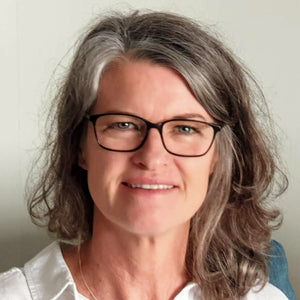
Cervical cancer is one of the most preventable cancers and Australia is leading the way in making sure more people have access to life-saving screening. One of the most exciting developments is the option for cervical self-screening, which means you can now take your own sample for the Cervical Screening Test (CST), in a simple, private, and effective way.
Let’s break down what this means, how it works, and why it matters for you or someone you care about.
What Is Cervical Self-Screening?
Cervical self-screening is a way for women and people with a cervix to collect their own sample for the national cervical screening program. Instead of a healthcare professional taking the sample during a pelvic exam, you can use a small swab to collect a sample from your vagina yourself.
This test looks for human papillomavirus (HPV)—the virus responsible for nearly all cases of cervical cancer. If HPV is detected, further testing will help check for any cell changes in the cervix.
Since July 2022, anyone eligible for cervical screening in Australia (aged 25 to 74) can choose between self-collection and the traditional clinician-collected method with both being offered through your GP or health provider.
Who Should Get Screened and When?
Cervical screening is recommended for anyone aged 25 to 74 with a cervix, even if you’ve had the HPV vaccine or are no longer sexually active. The test only needs to be done every five years if no HPV is found.
If you’re experiencing symptoms like unusual bleeding, pain, or discharge, a clinician-collected sample is recommended so they can investigate more closely.
Why Self-Collection Matters
Self-collection has changed the game for many people who:
- Feel anxious or embarrassed about traditional cervical exams
- Have experienced trauma
- Have medical anxiety
- Live in remote or rural areas
- Are from culturally or linguistically diverse backgrounds
In fact, since the option became widely available, the number of people screening for the first time (aged 30 to 74) has jumped from 13% to a whopping 49%!
More people getting screened means more lives saved and that’s something worth celebrating.
How Does Self-Collection Work?
The process is quick and designed to be as comfortable as possible:
- Your GP or nurse will give you a swab and explain how to use it.
- You’ll go to a private space (often just a bathroom at the clinic).
- Insert the swab into your vagina, rotate it gently for 10–30 seconds, then remove it.
- Hand the swab back to your provider and they’ll send it to a lab for testing.
You don’t need to touch your cervix, and it doesn’t require any special equipment. Most people find the process easy and much less intimidating than a speculum exam.
Common Questions
Is self-collection as accurate as a test done by a doctor or nurse?
Yes! Research shows self-collected swabs are just as accurate at detecting HPV as clinician-collected ones.
What if I’ve had the HPV vaccine—do I still need to screen?
Yes. While the vaccine protects against many HPV types, it doesn’t cover all cancer-causing strains. Regular screening is still important.
Can I do the test at home?
Not quite yet. Right now, self-collection needs to be done at a healthcare clinic, under the guidance of your GP or nurse.
I think I'd prefer the Doctor to do the test. How should I prepare for an appointment?
Read our blog How to Talk to a Doctor About Vaginal Concerns for tips on effective communication and an explanation of what a vaginal examination involves.
Australia’s Big Goal: Eliminate Cervical Cancer by 2035
Yes, really! Australia is on track to become the first country in the world to eliminate cervical cancer as a public health issue. We’re getting there through:
- Widespread HPV vaccination (over 80% of girls are vaccinated by age 15)
- Regular, five-yearly cervical screening
- Increased awareness and accessibility—especially through self-screening
Campaigns like “Own It” are also helping people in under-screened groups feel more informed and empowered to take the test.
Ready to Take the Next Step?
If you’re due (or overdue!) for your cervical screening, talk to your GP or healthcare provider about the self-collection option. They’ll walk you through it and support you every step of the way.
- Australian Government – National Cervical Screening Program: Self-Collection
- Cancer Council Australia – Self-Collection Information
- Healthdirect Australia – Cervical Screening Test
- The Australian – Policy Change Boosting Participation
- ACPCC – National Cervical Screening Program: Quick Reference Guide (PDF)
- Daily Telegraph – What You Need to Know About Self-Swabs
Disclaimer: This blog is for informational purposes only and is not a substitute for professional medical advice. Always consult with a qualified healthcare provider for accurate diagnosis and appropriate treatment.


 www.linkedin.com/in/brenda-tootell
www.linkedin.com/in/brenda-tootell